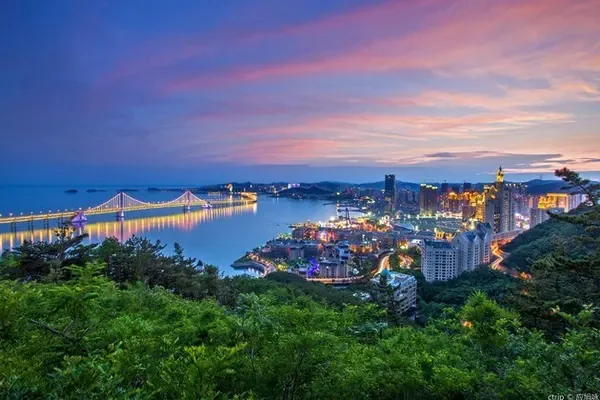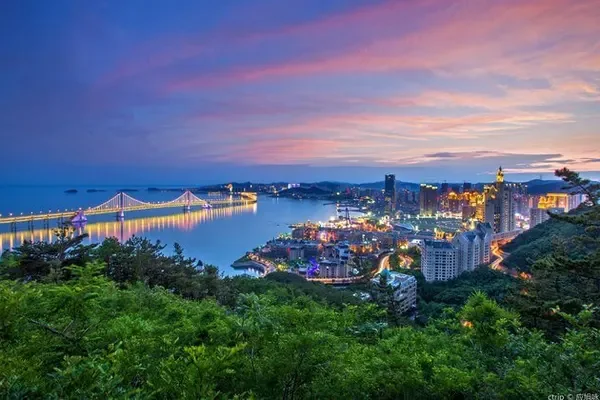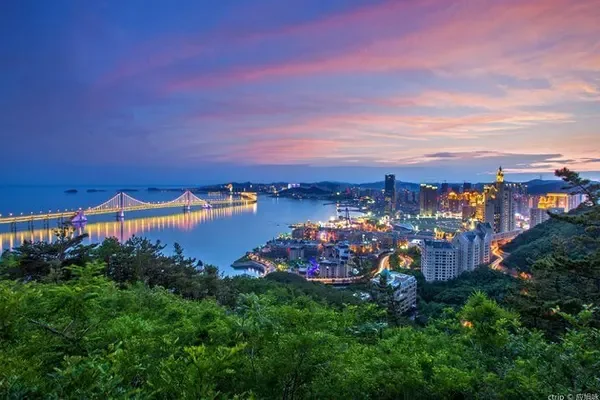China is so big, I want to visit it. Take you to a place you have been or have not been to.
"Mysterious Miracle", "Oriental Pyramid", Xixia Royal Tomb, what can you see?
Since Qin Shihuang unified China and brought Ningxia into China's territory, there have been two minority regimes in Ningxia. It existed for 25 years; the other was the Xixia Kingdom (1038-1227) established by Li Yuanhao, a party member of the ancient Xiqiang people. After 10 generations of emperors, it existed for 189 years and was destroyed by Mongolia in 1227. Both regimes established their capitals in present-day Yinchuan, Ningxia.

Li Yuanhao was majestic and grand, conquered east and west, and opened up a wide area of territory. He successively competed with the Northern Song Dynasty, Liao Dynasty, Southern Song Dynasty, and Jin Dynasty. At its peak, the area was about 830,000 square kilometers, including most of today's Ningxia and Gansu, western Inner Mongolia, and Shaanxi. The vast areas in the north, east of Qinghai, east of Xinjiang and south of Mongolia. He also ordered his minister Nori Renrong to create a written language——Xixia Wen, which completed a complete set of laws and regulations.

The grievances between Xixia and Meng Yuan were too deep. Meng Yuan attacked Xixia six times, four of which were Genghis Khan's personal commander, and Genghis Khan also died in the sixth personal expedition. When the Mongols captured the capital of Xixia and destroyed Xixia, what kind of revenge do you think they will have? The cultural relics and historical sites were completely destroyed, and the Xixia classics and documents were burned. Therefore, although we have deciphered the Xixia characters, the civilization of the Xixia Dynasty lacking historical materials has left countless unsolved mysteries for future generations.
Take the tombs of 9 Xixia emperors and 254 tombs of Xixia kings. It was discovered by accident during the construction of a small military airport in 1972. The tombs are only more than 30 kilometers away from the old city of Yinchuan.

After the tomb of the Western Xia Dynasty was discovered and identified, it immediately attracted the attention of the whole world, and laurels such as "mysterious miracle" and "Oriental Pyramid" followed one after another.

The total area of the Western Xia Royal Mausoleum is more than 50 square kilometers, about 10 kilometers long from north to south, and about 5 kilometers wide from east to west. When it was first built, each emperor's cemetery had underground mausoleums, tombs, ground buildings and gardens, each occupying an area of about 100,000 square meters, with roughly the same shape and layout. The Xixia Mausoleum is one of the largest and most complete imperial cemeteries in China.



Influenced by Buddhist architecture, the Western Xia Royal Mausoleum organically combines Han culture, Buddhist culture, and party culture, forming a unique form of Chinese cemetery architecture. The Xixia Mausoleum also witnessed the integration and conflict process of a nation in the history of Asian civilization under the alternating influence of Central Plains culture, Western Region culture and other cultures. In the history of human civilization, Xixia Mausoleum has unique cultural value and contribution. Regrettably, after Xixia was destroyed by the Mongolian Yuan Dynasty, the cemetery was destroyed by man-made destruction, all the buildings on the ground were destroyed, and the inscriptions were all fragments. Now we can only narrate it from the unearthed cultural relics.



Objectively speaking, the tombs of the Western Xia Dynasty are just a few big bumps at the foot of Helan Mountain, desert and wasteland, desolate and lonely. Tombs 1, 2, and 3 are currently open. Mausoleum No. 3 is the best-preserved and most distinctive imperial mausoleum of the Xixia Mausoleum. It is presumed to be the "Tai Tomb" of Li Yuanhao, the founding emperor of Xixia.
2012 Yinchuan Western Xia Royal Tomb Ticket 60 yuan

Even if the scenic spots are developed, what you see is not a "beauty". From the perspective of tourism economy, sound and light installations have been set up in the mausoleum area. As night falls, everything is silent, and spotlights shine on the mausoleum platform, turrets, and sacred walls. Tourists can enter the mausoleum area by horse-drawn carriage, visit the ruins of the mausoleum, and watch "The King of Xixia" and other laser films introducing the history of Xixia.
Scenic gate

The words on the gates on both sides of the gate of the scenic spot are "Dabai Gaoguo" in Xixia script. In 1038, Li Yuanhao proclaimed himself emperor and built the "Dabai Gaoguo". The people of his country advocated white color, and it was called Xixia in history.
Western Xia Museum

When entering the scenic spot, first go to the Xixia Museum.

Statue of Li Yuanhao

Li Yuanhao, also known as Zhao Yuanhao, called himself "Wu Zu" (meaning the Son of Heaven).
At the beginning of Tang Taizong (634), it was still the largest tribe of the ancient Qiang tribe, a primitive nomadic people. Tuoba Chici, the chief of Dangxiang, led his tribe to Tang, and then other chiefs also led their tribes to Tang. Tang Taizong gave Tuoba the surname " Li" surname. At the end of the Tang Dynasty (880) during the Huangchao Uprising, Tang Xizong fled to Sichuan. Tuoba Sigong, the leader of the party, gathered tens of thousands of soldiers from his own family and other ethnic minorities, and participated in the war to suppress the Huangchao Uprising. Tang Xizong promoted Tuoba Sigong to the Duke of Xia for his meritorious service in suppressing the uprising, and gave the emperor the surname "Li" again. Through the development of Tuoba Sigong's descendants, the Dangxiang clan completed the transformation from clan chiefs to feudal landlords. In the first year of Song Mingdao (1032), Li Yuanhao succeeded to the throne. He went to the Tang and Song courts to give the surnames "Li" and "Zhao", and he was named "Wei Mingshi" and proclaimed himself emperor.
No. 3 Cemetery Ruins

Each mausoleum of the Xixia Mausoleum faces south and is longitudinally rectangular. The internal layout is roughly the same, and it is divided into four parts: Jiaotai, Quetai, Yuecheng, and Mausoleum (inner city and palace city). There are dedicated halls and tower-shaped mausoleums in the mausoleum. Because the cemetery was basically destroyed, all that remained were remnants, so we could only look at the instructions and models.
Que Taiwan


Located at the southernmost end of the cemetery, it is arranged symmetrically on both sides of the central axis, built of loess, and the tall tower is like a majestic guard. The Que platform is one of the characteristics that distinguish the imperial mausoleum from the accompanying tombs. Judging from the cleared components and decorations, the original Quetai building should be a Lama pagoda-style pagoda building.
stele pavilion


The stele pavilions of the Xixia Mausoleum are different from the Tang and Song imperial mausoleums. It is behind the Quetai and before the Moon City, and most of them are three stele pavilions, one in the west and two in the east. The architectural forms have their own characteristics. The number, building area, and building form are all asymmetrical, which does not match the overall symmetrical layout of the Xixia Mausoleum, and also breaks the symmetrical pattern of traditional Chinese architecture.
moon city

After the stele pavilion, there is a small city attached to the inner city of the cemetery. The walls are built of rammed earth, rectangular in shape from east to west, and the city is exposed like a crescent moon, so it is called Moon City.
Mausoleum (inner city, Miyagi)

The main buildings of the cemetery are the Moon City and the Inner City, which are connected in a "convex" shape. The mausoleum symbolizes the building of the inner city of the imperial palace. It is surrounded by walls on all sides and built by ramming loess in sections. There were originally 4 corner platforms at the four corners of the inner city to show the sign area. The corner platform is a unique form in the Xixia cemetery, which has not been seen in the Tang and Song cemeteries. There are three door openings in the middle of the south wall of the inner city. Inside the door is the dedication hall, on which there was originally a tall gate tower.
dedicated hall, tomb



The Xiandian is a building used for sacrifice in the cemetery, and there is no building left. Between the dedicated hall and the mausoleum platform is a tomb passage filled with sand and gravel, which is raised like a fish ridge, and the tomb passage is below it. There is a robbery pit at the north end.

mausoleum (tomb tower)

The most spectacular, these "mounds" known as the "Oriental Pyramid" are mausoleums (tomb towers). People who are not careful think that this mound is a tomb bag, and the bottom is a tomb, but it is not. In the Han culture, the tomb bag was used to seal the soil, but the mausoleum of the Xixia Mausoleum was not sealed with soil, and the tomb was not under the mausoleum.
The mausoleum platform is built with rammed earth, surrounded by bricks on the outside, with eight sides and seven levels, which are retracted layer by layer. The outside is supported by wooden buildings, which are brick, wood and tile structures, forming a seven-level pagoda with dense eaves. This kind of building is unique in Chinese architecture and is the creation of party members. Now there are only rammed earth mausoleums, ruined walls and a piece of rubble.
The pagoda-style mausoleum fully reflects Xixia's religious belief in Buddhism, and is the product of the combination of Buddhist culture and Dangxiang culture. The pagoda is a Buddhist building, which is essentially a tomb for the burial of Buddha bones or eminent monks. The tower style built from the mausoleum platform reflects the belief in Buddhism of the Xixia emperors.
It is best to read the description and model information, or listen to the explanation, otherwise when you come here, you will see only a few large desolate mounds.


